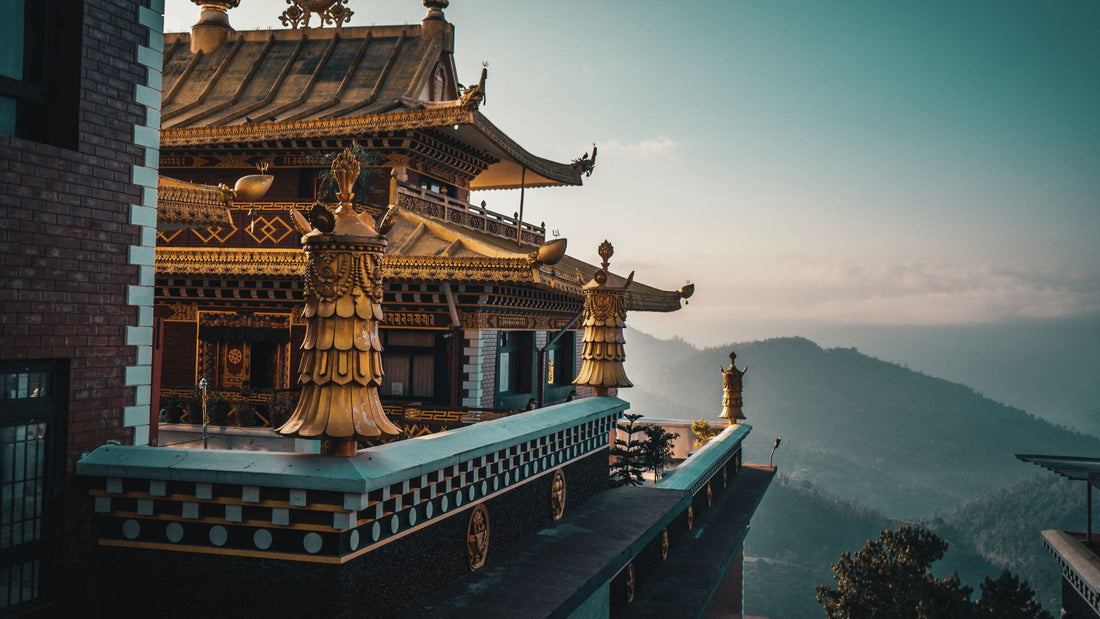
Rhodiola's Use In Traditional Tibetan Medicine
Anthony GucciardiRhodiola has enjoyed explosive popularity in the United States and around the world in recent years for its host of reported benefits, particularly in the form of rhodiola rosea. However, the extensive role of rhodiola in the traditional Tibetan medicine system and how the Tibetan monks considered rhodiola crenulata as sacred is lesser known.
Rhodiola could be described as an 'ancient super herb' of sorts, and even in the modern context there is a growing amount of research that is helping to support its many benefits that have been touted in some traditional healing systems (albeit often in different manners of delivery) for thousands of years, including: energy boosting properties, increased mental and physical performance, supporting against fatigue, supporting with anxiety, stress, and more.
And while rhodiola has been used across a variety of cultures (and often imported from Tibet and Siberia), it's usage in traditional Tibetan medicine is of considerable note and interest.
Tibetan Medicine's Use of Rhodiola

Far before major groups like Mental Health America were writing online about recent studies on rhodiola and potential traditional benefits, the ancient Tibetans were utilizing rhodiola in their traditional system of medicine known as the Sowa Rigpa. This complex healing system dates back around 2,500 years during the pre-Buddhist era.
A form of rhodiola called rhodiola crenulata was held among Tibetan monks as a sacred plant and presumably used in a spiritual capacity as well as a 'cooling' and 'detoxifying' herb in the Tibetan system as documented by researchers. Tibetan rhodiola kirilowii, another variety of rhodiola, is used in traditional Chinese medicine as an antidote to altitude sickness that is also taken by mountain climbers and aviators.
There are over 200 different species of rhodiola, and around 20 are documented to be used in traditional herbal medicine system such as Tibetan medicine. Rhodiola crenulata is of particular importance to Tibetan medicine. Rhodiola rosea is most commonly consumed today as an herbal tincture, and is the subject of research on improvement of learning and memory function to applications with type 2 diabetes.
Rhodiola 'Cooling, Detoxifying' In Tibetan Medicine
Subhuti Dharmananda, Ph.D. documents a host of traditional rhodiola uses, placing the categories of use within the system as 'cooling' and 'detoxifying' as well as 'vitalizing blood circulation'. In his work Tibetan Traditional Medicine for the Institute for Traditional Medicine, he states:
"Information about traditional uses of rhodiola remains somewhat limited; it was used for treatment of dysentery, back pain, lung inflammation with expectoration of bloody mucus, painful and irregular menstruation, leukorrhea, and traumatic injuries (25). Based on the indications for use, rhodiola appears to be cooling and detoxifying, and vitalizes blood circulation."
Read: Rhodiola Rosea's Ancient History And First Recorded Use By Greek Physician Dioscorides
Rhodiola “Suromabao” Anti-Inflammatory Effects
In the research piece entitled The Tibetan Medicine Rhodiola is Effective Against Inflammatory Storms authors Wenhua Li and Xia Gu write:
"[Rhodiola] is called “Suromabao” in Tibetan and has such good names as “Plateau ginseng”, “Oriental sacred grass” and “snow-capped mountain fairy grass”. Studies have shown that Rhodiola rosea and its active ingredients salidroside have significant anti-inflammatory effects and play a role in reducing inflammatory responses in various organ inflammatory reactions..."
The tenants of traditional Tibetan medicine differ greatly from the Western idea of conventional treatment, and center around the notion that true health is akin to balance, and disease is in fact an imbalance. It is this imbalance that is believed to be capable of being present before the standard physical symptoms of disease begin to present.
As with many ancient systems, the wisdom behind the traditional healing practice continues to unfold as research centers in on the benefits of 'super herbs' like rhodiola in its many therapeutic forms that are now frequently taken in the form of herbal tinctures. Traditional Tibetan medicine is not only still practiced today around the world including in Tibet, India, Nepal, Ladakh, Siberia, Mongolia, and even the United States, but its core functions are being revisited with a modern lens and newfound appreciation.
100% human-created content. Professionally reviewed for quality and information content.
Additional Sources / Further Reading:
Frontiers
Pure Land Farms
WebMD
Examine
Photo by Raimond Klavins
Photo by Raimond Klavins



